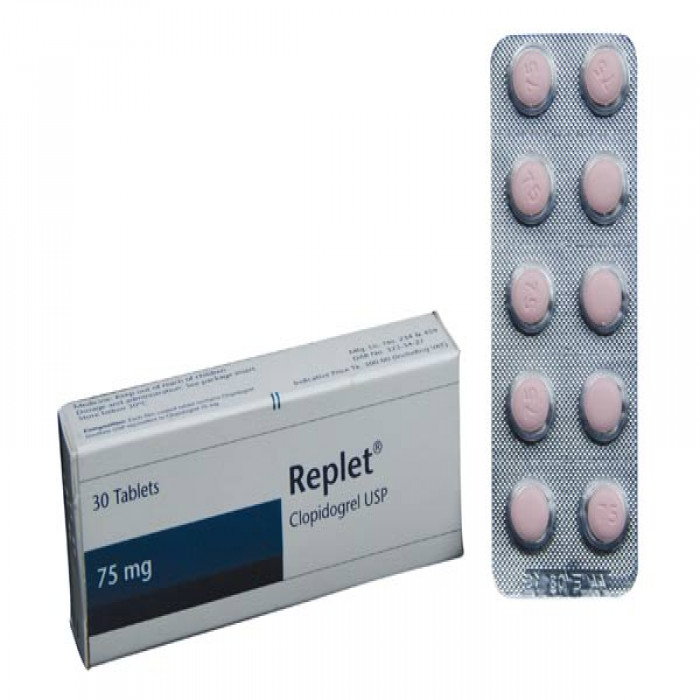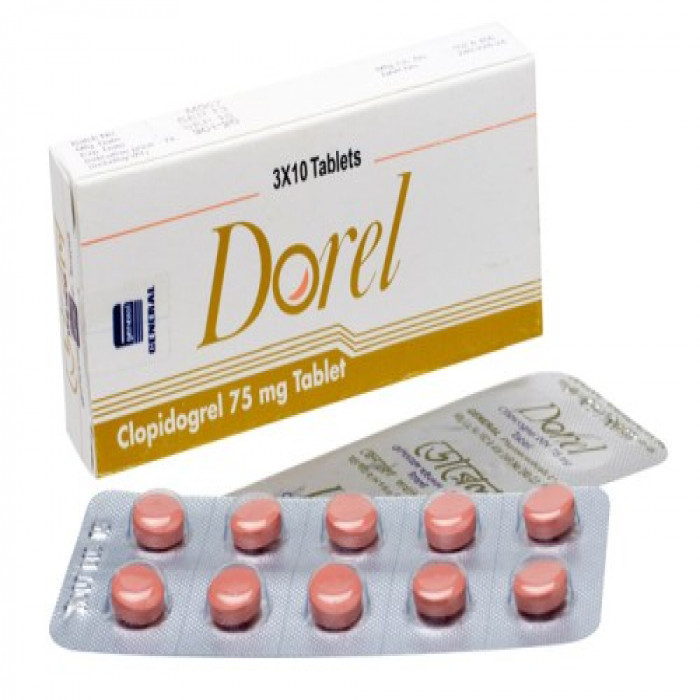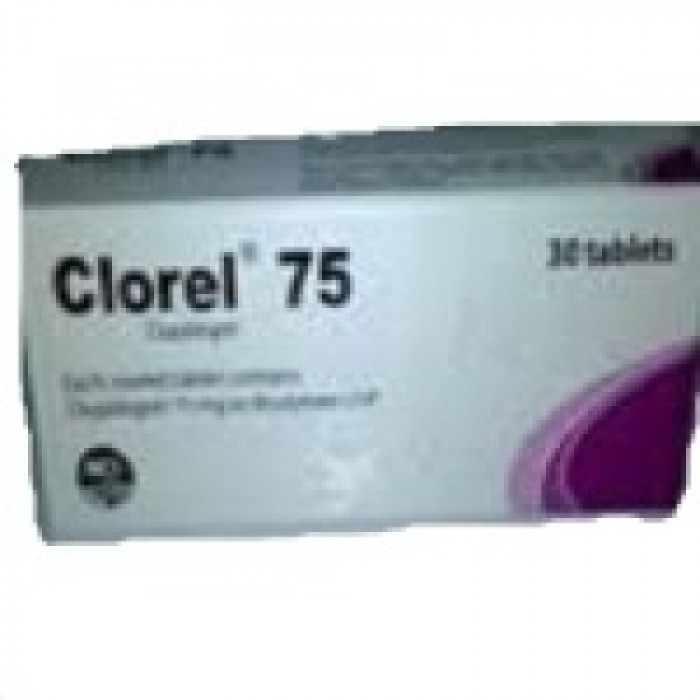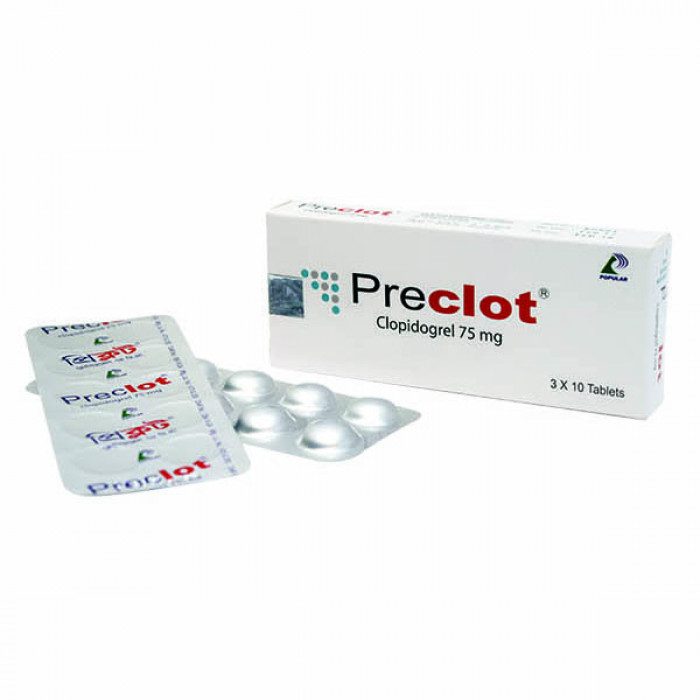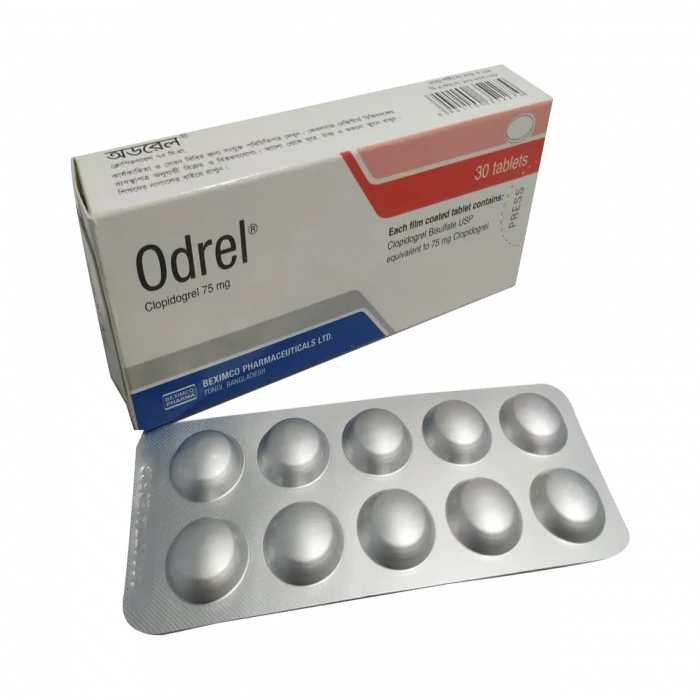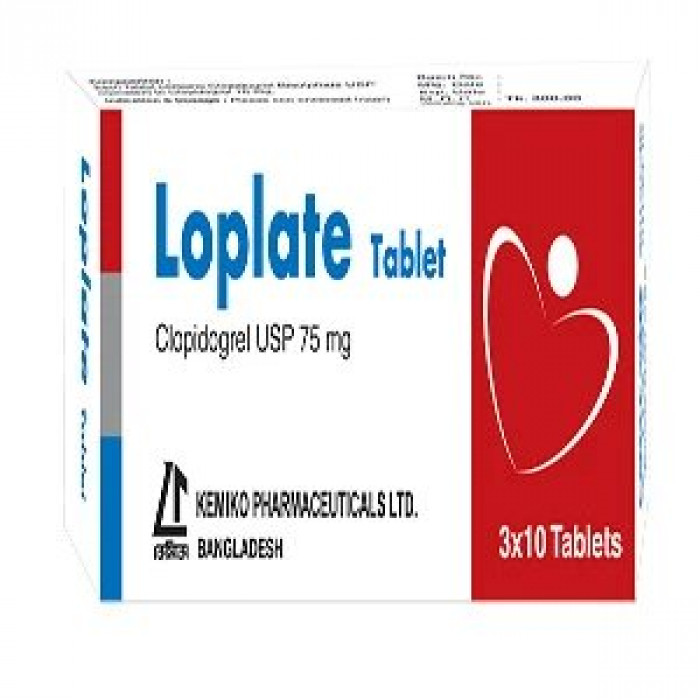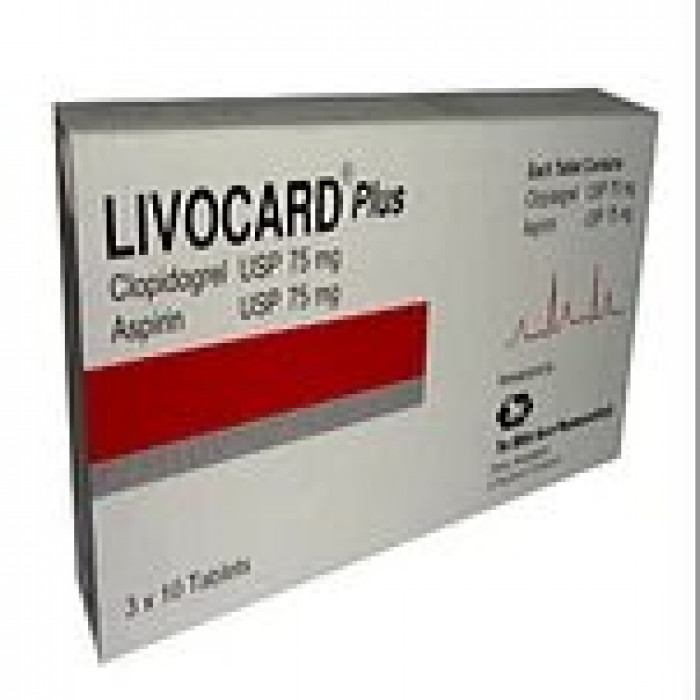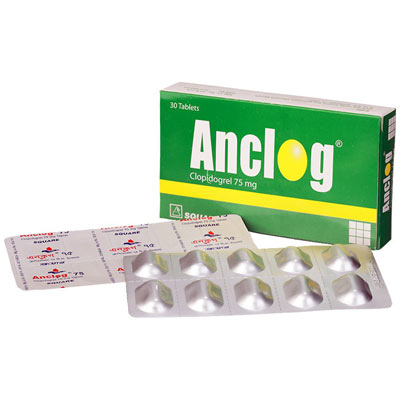
✔ 100% Authentic Product
👁️ Currently Viewing 1908
Anlet 75mg 10pcs
Generic Name: Clopidogrel 75mg
Manufacturer/Distributor: Globe Pharmaceuticals Ltd.
Discount
Price: ৳ 103
MRP:
৳
110
6%
Off

100% Genuine Products, Guaranteed

Safe & Secure Payments, Always

Fast, Secure & Efficient Delivery

Proper Packaging
 Cash on Delivery - All over Bangladesh
Cash on Delivery - All over Bangladesh Regular Delivery - 12-24 Hours, Dhaka City* Charge Tk.39-59
Regular Delivery - 12-24 Hours, Dhaka City* Charge Tk.39-59 Regular Delivery - 24-48 Hours, Other Cities* Charge Tk.99-110
Regular Delivery - 24-48 Hours, Other Cities* Charge Tk.99-110
 ফ্রি ডেলিভারিঃ - ৯৯৯ টাকা+ অর্ডারে, ঢাকা
শহরে
ফ্রি ডেলিভারিঃ - ৯৯৯ টাকা+ অর্ডারে, ঢাকা
শহরে ফ্রি ডেলিভারিঃ - ২৯৯৯ টাকা+ অর্ডারে, ঢাকার
বাহিরে
ফ্রি ডেলিভারিঃ - ২৯৯৯ টাকা+ অর্ডারে, ঢাকার
বাহিরে
100% Genuine Products, Guaranteed
Safe & Secure Payments, Always
Fast, Secure & Efficient Delivery
Proper Packaging
 Cash on Delivery - All over Bangladesh
Cash on Delivery - All over Bangladesh Regular Delivery - 12-24 Hours, Dhaka City* Charge Tk.39-59
Regular Delivery - 12-24 Hours, Dhaka City* Charge Tk.39-59 Regular Delivery - 24-48 Hours, Other Cities* Charge Tk.99-110
Regular Delivery - 24-48 Hours, Other Cities* Charge Tk.99-110 ফ্রি ডেলিভারিঃ - ৯৯৯ টাকা+ অর্ডারে, ঢাকা
শহরে
ফ্রি ডেলিভারিঃ - ৯৯৯ টাকা+ অর্ডারে, ঢাকা
শহরে ফ্রি ডেলিভারিঃ - ২৯৯৯ টাকা+ অর্ডারে, ঢাকার
বাহিরে
ফ্রি ডেলিভারিঃ - ২৯৯৯ টাকা+ অর্ডারে, ঢাকার
বাহিরে
✅ Description:
Anlet 75 is an antiplatelet medicine or a blood thinner that helps to prevent the formation of harmful blood clots in your blood vessels. This helps to lower the chances of you getting a heart attack or stroke. It is a widely used medicine for heart protection. Anlet 75 is prescribed to people at high risk of heart disease. This includes people with peripheral vascular disease (blood circulation problems due to narrowing of blood vessels), recent heart attack or stroke, irregular heartbeats, and those who have undergone certain heart procedures like stenting. It is also used in combination with some other medicines for the treatment of heart attack and some types of heart-related chest pain (unstable angina). This medicine may be taken with or without food and should be taken at the same time each day. It is important to keep taking this medicine even if you feel well. If you stop taking this medicine, it may increase your chance of having a heart attack or stroke. The most common side effect seen with this medicine is bleeding. This may be in the form of bruising, nose bleeds, blood in urine or stools (black colored stools), or heavier periods than usual in women. If you cut or injure yourself, it may take longer than usual for the bleeding to stop. Such episodes of bleeding are usually mild and resolve on their own. However, you should consult your doctor straight away if the bleeding persists or worries you. This medicine is not suitable for some people. Do not take it if you are bleeding from anywhere in the body such as a stomach ulcer or bleeding within the brain, or if you have severe liver problems. Before taking it, you should let your doctor know if you have ever had a problem with your blood not clotting properly or if you have recently had a serious injury or surgery. This medicine may need to be stopped temporarily before planned surgery or dental treatment. Pregnant or breastfeeding women should also consult their doctor before taking it.
Uses of Anlet 75
- Prevention of heart attack and stroke
- Heart attack
- Peripheral vascular disease
Side effects of Anlet 75
Common
- Bleeding
How to use Anlet 75
Take this medicine in the dose and duration as advised by your doctor. Swallow it as a whole. Do not chew, crush or break it. Anlet 75 may be taken with or without food, but it is better to take it at a fixed time.
How Anlet 75 works
Anlet 75 is an antiplatelet medication. It works by preventing platelets from sticking together, thereby decreasing the formation of harmful blood clots. This lowers the chance of heart attack or stroke.
What if you forget to take Anlet 75?
If you miss a dose of Anlet 75, take it as soon as possible. However, if it is almost time for your next dose, skip the missed dose and go back to your regular schedule. Do not double the dose.
Quick Tips
- For best results, take it at the same time every day.
- Anlet 75 increases your risk of bleeding. Be careful while shaving, using sharp objects, or cutting fingernails or toenails.
- Do not discontinue using the medicine without consulting your doctor as this may increase your chances of having another heart attack or stroke.
- If you are scheduled to undergo a surgery or dental treatment, you may be asked to stop taking Anlet 75 temporarily.
Indication
Coronary Artery Disease, Acute coronary syndrome, Myocardial infarction, Peripheral vascular disease, Cerebrovascular disease, Atherosclerosis, Thromboembolic disorders, Unstable angina, Stroke
Administration
May be taken with or without food.
Adult Dose
Oral Prophylaxis of thromboembolic disorders, Recent MI, Stroke, or Established Peripheral Arterial Disease, Coronary Artery Disease Adult: 75 mg once daily. Acute coronary syndrome Adult: For ST-elevation MI: In combination w/ aspirin: 75 mg once daily. <75 years 300 mg loading dose followed by 75 mg for 14 days up to 12 months (if no bleeding) Concomitant therapy with aspirin: Administer in combination with aspirin 75-325 mg qDay with or without thrombolytics >75 years No loading dose 75 mg for 14 days up to 12 months (if no bleeding) For unstable angina, non-ST-elevation MI: In combination w/ aspirin: Initially, 300 mg loading dose, followed by 75 mg once daily for up to 12 mth. Hepatic impairment: Use caution; experience limited
Renal Dose
Renal impairment: Dose adjustment not necessary
Contraindication
Hypersensitivity. Active pathological bleeding. admin within 7 days after MI and ischaemic stroke, coagulation disorders. Lactation.
Mode of Action
Clopidogrel inhibits adenosine diphosphate (ADP) from binding to its receptor sites on the platelets and subsequent activation of glycoprotein GP IIb/IIIa complex thus preventing fibrinogen binding, platelet adhesion and aggregation.
Precaution
Patients at risk of increased bleeding from trauma, surgery, or other pathological conditions; ulcer; renal and hepatic impairment; history of bleeding or haemostatic disorders. Pregnancy. Lactation: Not known whether drug is excreted in breast milk; not recommended
Side Effect
1-10% Upper respiratory tract infection (8.7%),Chest pain (8.3%),Headache (7.6%),Flulike syndrome (7.5%),Arthralgia (6%),Pain (6%),Dizziness (6%),Diarrhea (4.5%),Rash (4.2%),Rhinitis (4.2%),Depression (3.6%),Urinary tract infection (3.1%) <1% Severe neutropenia,Thrombotic thrombocytopenic purpura,Acute liver failure,Aplastic anemia,Hypotension,Hepatitis,Myalgia,Eczema,Erythema,Agranulocytosis Potentially Fatal: Bleeding disorders including GI and intracranial haemorrhage. Blood dyscrasias.
Pregnancy Category Note
Pregnancy Available data from cases reported over two decades in published literature and postmarketing surveillance have not identified any drug-associated risks for major birth defects or miscarriage; there are risks to pregnant woman and fetus associated with myocardial infarction and stroke Myocardial infarction and stroke are medical emergencies; therapy for pregnant woman should not be withheld because of potential concerns regarding effects of clopidogrel on the fetus Labor or delivery Therapy during labor or delivery will increase risk of maternal bleeding and hemorrhage; avoid neuraxial blockade during clopidogrel use because of risk of spinal hematoma; when possible, discontinue therapy 5-7 days prior to labor, delivery, or neuraxial blockade There are no data on presence of drug in human milk or effects on milk production; no adverse effects on breastfed infants observed during lactation in a small number of postmarketing cases; studies in rats have shown that clopidogrel and/or its metabolites are present in milk; when a drug is present in animal milk, it is likely that the drug will be present in human milk; consider developmental and health benefits of breastfeeding along with mother’s clinical need for therapy and any potential adverse effects on breastfed infant from drug or underlying maternal condition
Interaction
Co-admin with NSAIDs may increase the risk of stomach and intestinal bleeding. High-dose clopidogrel may lead to increased warfarin levels thus increasing the risk of bleeding. High-dose clopidogrel may also inhibit P450 (2C9), thus interfering with the metabolism of phenytoin, tamoxifen, torasemide, fluvastatin and some NSAIDs.
⚠️Disclaimer:
At ePharma, we’re committed to providing accurate and accessible health information. However, all content is intended for informational purposes only and should not replace medical advice from a qualified physician. Please consult your healthcare provider for personalized guidance. We aim to support, not substitute, the doctor-patient relationship.




